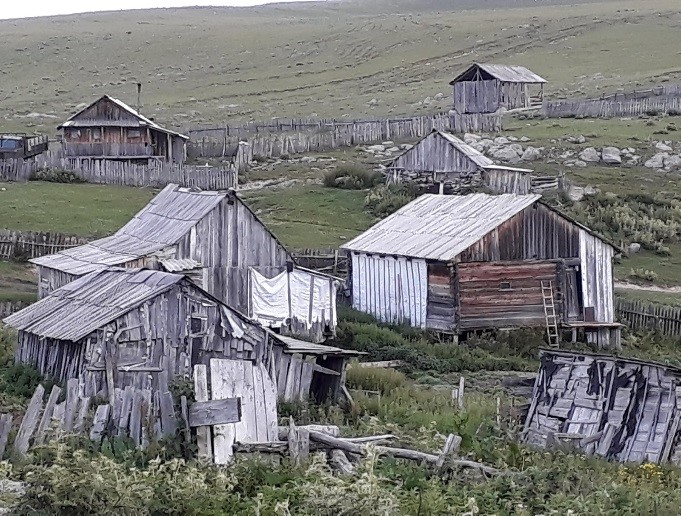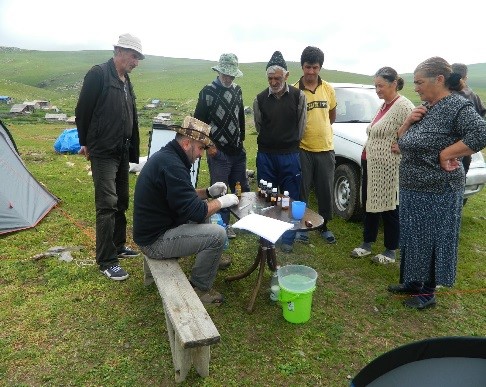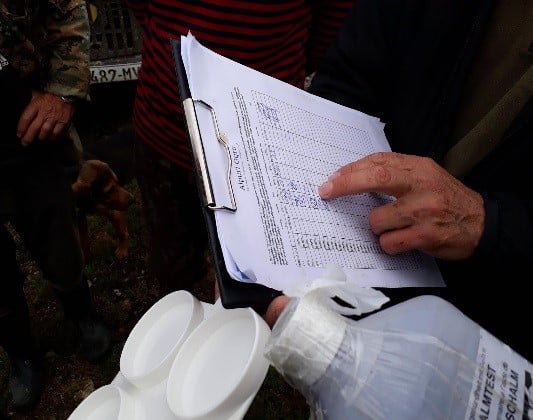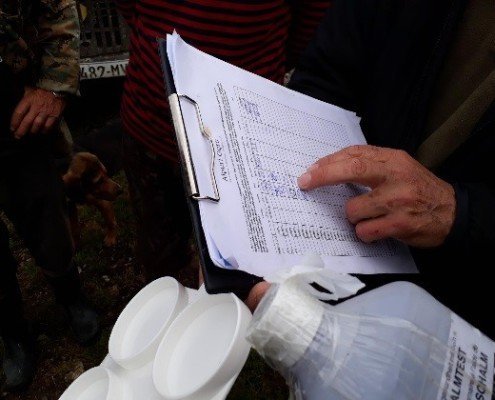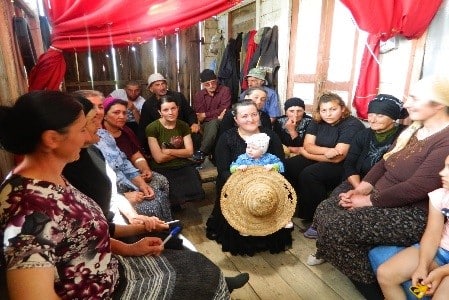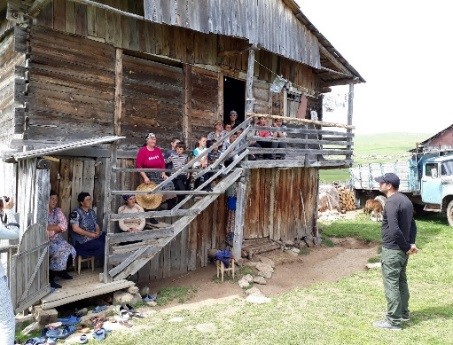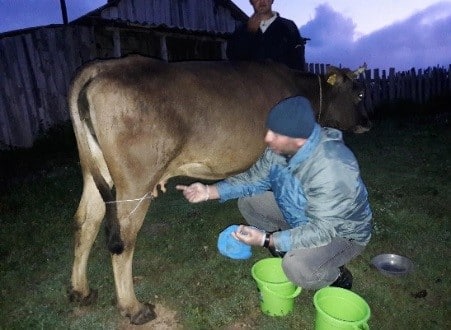Since 2011, Fert has been working in Georgia alongside the GBDC (Georgian Business Development Center) to develop the sector in the Samtskhe Javakheti region. On the spot, a team of 5 local technicians (veterinarian, zootechnicians, animator) support the breeders of about ten villages in the improvement of their breeding practices.
Today, in the Samtskhe-Javakheti region, milking and storage practices, as well as the lack of collection control, do not guarantee sufficient milk quality for cheese processing. For companies that process milk, losses are significant. So how can we progress? With the help of GBDC technicians, “Le goût de la montagne” cooperative has embarked on a process of progress.
In 2015, the cooperative “Le goût de la montagne” was created in the village of Adigeni, around 16 cooperative farmers. Supported by the Georgian State programme, it acquired industrial equipment for the manufacture of cheese. It thus produces Sulguni[1], which it sells mainly on the Tbilisi market.
In the spring of 2018, faced with difficulties in its manufacturing process, the cooperative contacted the GBDC team. Indeed, the farmers did not understand what was happening: for them, their milk was of high quality because it was rich in fat. To understand where the problem came from, the GBDC offered to support them for a week in the mountain pastures; and thus, to share their daily lives, far from the village.
[1] Sulguni is a Georgian cheese in brine from the Samegrelo region. It has an acidic, moderately salty taste, a honeycomb texture and an elastic consistency; these attributes are the result of the process used, as well as the source of its nickname “vinegar cheese”.
Photos on the right: The mountain pasture is practiced during the summer to allow the herds to have green pastures
For the technicians, it was a unique opportunity to get to know these farmers better, to observe their current practices, and to understand the impact on milk quality. Quite quickly, their observations led them to focus more particularly on health aspects: poorly ventilated and dirty stables; no cleaning of the udders during milking; dirty cans and equipment; no access to medicines… It must be said that the infrastructure in the mountain pastures is limited: no electricity, roads in poor condition. The technicians carried out various tests (mastitis screening by the CMT method[1], acidity test, alcohol test, etc.). Thus, out of 130 animals tested, 59 had mastitis. The GBDC veterinarian also performed gestation tests. All the results of these examinations were recorded in a logbook.
[1] CMT : Californian Mastite Test
Training in action
In return, the farmers received advice and the animals received care. In addition, the technicians organized various training sessions on herd health and milking and milk storage hygiene conditions, including the basics of milk production, the importance of health status on milk quality (bacteria, somatic cells, antibiotics and mastitis), good milking practices and animal care… Nearly 35 farmers attended these training sessions.
In addition to the theoretical contributions, the training continued with practical application periods, with the active participation of farmers. Finally, beyond the training sessions, there were many discussions on milk production and animal health.

